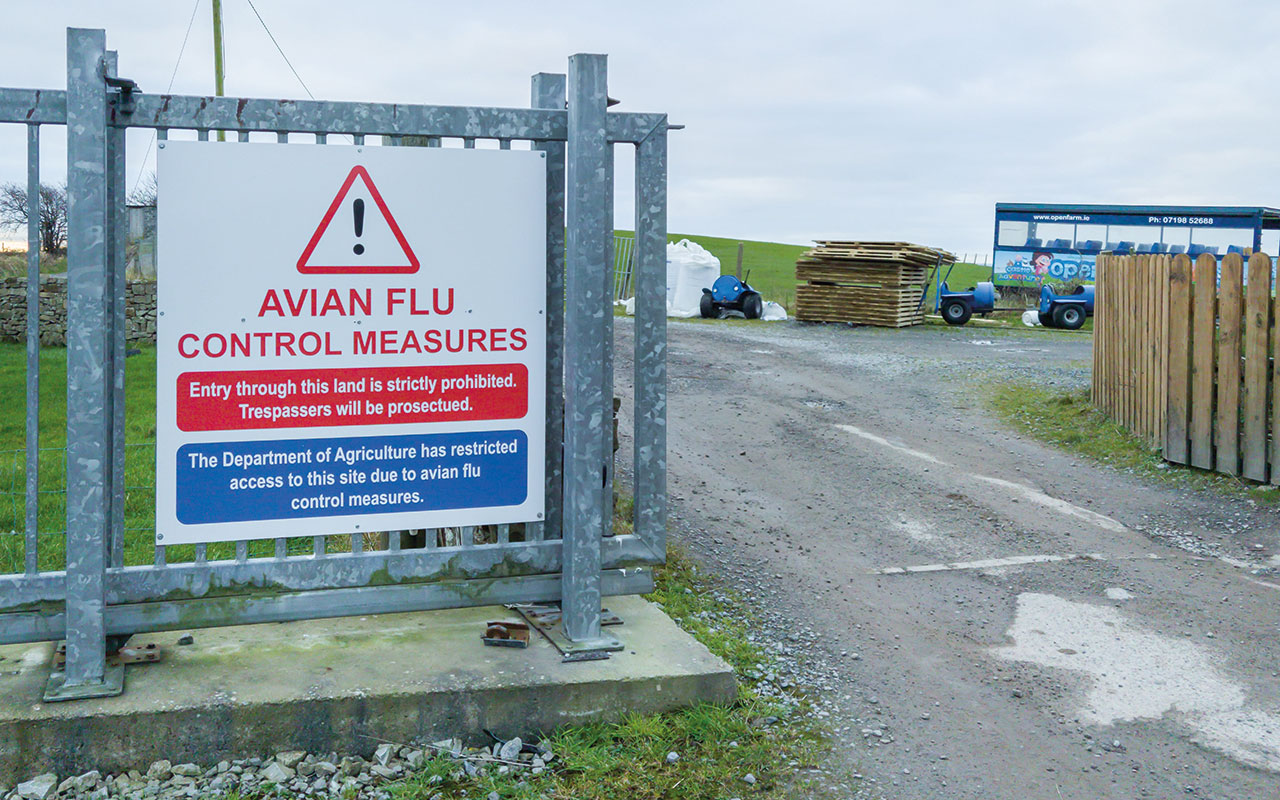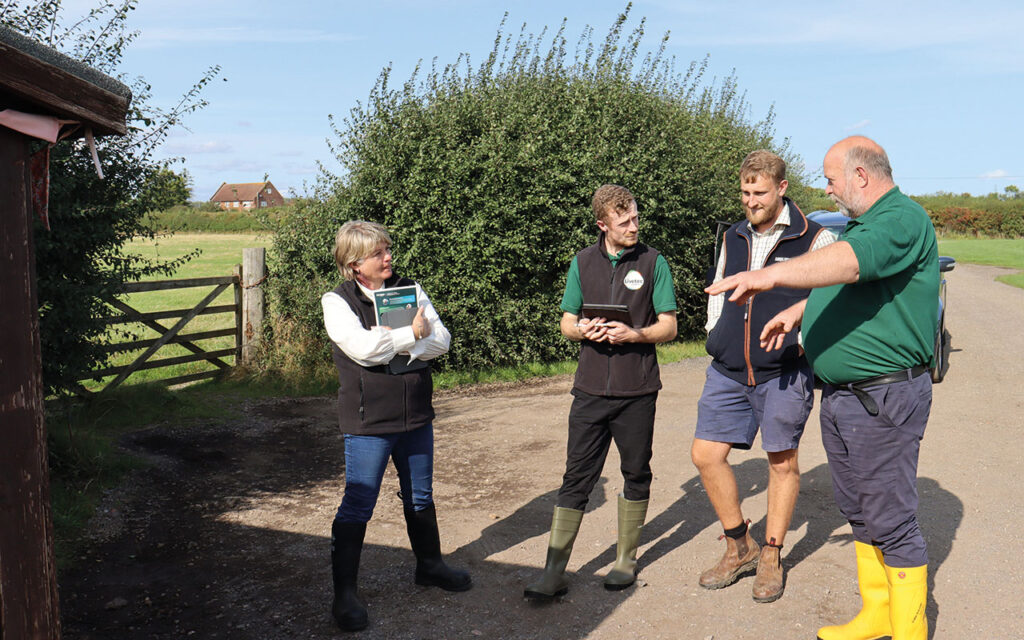As African swine fever (ASF) edges closer to the UK and foot-and-mouth returns to Europe, pig producers are constantly being urged to strengthen their biosecurity before it’s too late.
According to Julian Sparrey, technical director at Livetec Systems, a leading provider of biosecurity solutions, pig producers now have the opportunity to apply tried-and-tested approaches from the poultry sector to strengthen disease prevention.
The Livetec team has been working with AHDB to deliver a series of ASF-focused producer workshops, drawing on lessons from Europe’s response to ASF and Livetec’s experience of tackling avian flu in poultry.
“Avian flu has been an enormous challenge for the poultry sector, but it’s also driven a step change in how producers approach disease risk,” he explained.
“It’s very much about the whole industry working closely together to achieve high standards – even putting competitive tensions aside, to a degree.
“We’re now seeing biosecurity become part of poultry farm culture, and that’s something the pig industry can and should take forward – especially when it comes to the looming threat of ASF.”
Understanding the risk
ASF is a highly contagious and fatal disease in pigs, with no current vaccine and limited options for control once it takes hold.
It’s a virus that can survive in cured and frozen meats, on clothing, in feed and on vehicles for long periods. In Europe, the uncontrolled movement of wild boar has been the main vector for disease spread.
Although the UK has fewer wild boar than mainland Europe, the risk of introduction is still significant due to human activity, such as illegal meat imports or contaminated equipment crossing borders.
The structure of the UK pig supply chain – especially the frequent movement of stock between sites – means that if ASF arrives, it could spread rapidly.
“In bed-and-breakfast and integrated systems, pigs are often moving three or four times in their life,” Mr Sparrey noted. “That makes the potential for cross-contamination much higher than in poultry, where most units are all-in, all-out.”
Movement control and quarantine
The poultry sector has developed strong systems around animal movements. Chicks are sourced from high-health hatcheries, and there’s little to no livestock mixing once birds arrive on farm. In contrast, the pig sector often involves multiple stages, sites and transporters.
Dr Paul Talling, a biosecurity adviser at Livetec, works closely with pig producers to manage these risks, offering farm-specific guidance to help protect pig herds.
“Knowing the health status of pigs coming onto your site, quarantining new arrivals and avoiding the mixing of pigs from different sources – these are foundational biosecurity practices. They sound simple, but they’re not consistently followed,” he said.
Haulage is a particular vulnerability. “A trailer might collect pigs from one unit and deliver to another with minimal cleaning and disinfection [C&D] in between. That’s a real concern. We know ASF can survive in muck on wheels and in the trailer, so washing out thoroughly between each load is also critical,” he said.

A fresh look at farm access
Both experts agree that the biggest lesson the pig sector can take from poultry’s experience is around controlling what, and who, comes onto the farm, although risk pathways differ between poultry and pigs.
“Avian flu made poultry producers realise that the risk can come from above – namely, wild birds flying over and dropping contaminated faeces – but for pigs, the risk is far more traditional. It’s what you bring onto the site,” Mr Sparrey said. “It’s the pigs themselves, their faeces, as well as the feed, equipment, clothing, people and vehicles.”
To minimise the risk of disease transmission on-farm, Dr Talling stressed the importance of setting up clean and dirty zones and providing facilities that support protocol adherence.
“If your site doesn’t have a clear-barrier system, with functional C&D equipment, secure entrances, dedicated PPE changing areas and strategically placed foot dips, then it’s hard for anyone – staff or visitors – to follow best practice,” he said, adding that behavioural change is just as important as physical infrastructure.
“You can have the fanciest set-up in the world, but if people don’t use it properly, it doesn’t help. The poultry sector has really invested in education to get that right,” he said.
Building a biosecurity mindset
While fencing, signage and site layout play a crucial role, especially for outdoor systems, the biggest transformation in poultry has come from mindset.
“Biosecurity fatigue is real,” said Mr Sparrey. “Changing your boots every time you go between sheds, not cutting across the yard to save a few seconds – all that matters, and people need to understand why.”
Drawing on his experience of seeing pig herds affected by ASF, Dr Talling highlighted the importance of day-to-day behaviours.
“With ASF, you might not see signs immediately,” he explained. “There could be one sick pig quietly infecting others. That’s why every small biosecurity breach matters – it’s all about preventing that first disease incursion, but also having systems in place to minimise spread if it happens.”
Looking ahead
Livetec is actively working on rolling out a number of measures to support disease prevention in pig systems.
“We’re adapting our existing poultry biosecurity tools, like e-learning modules and electronic advisory systems, to make them pig-specific,” Mr Sparrey added. “The fundamentals are the same – it’s about asking the right questions and understanding where the weak points are.”
Above all, both experts emphasise that waiting for ASF to arrive before acting would be a serious mistake. “We can’t afford to be reactive,” said Dr Talling. “If ASF gets in, it’ll move fast. Producers need to act now to be sure they’re not the weak link.”
Why emergency response planning matters
As well as proactive biosecurity, having a clear plan in place for if the worst happens is just as important.
In the event of disease outbreaks, poultry producers working with Livetec have benefited from having a clear, ready-to-go farm-specific Emergency Response Plan (ERP).
“Time is critical in an outbreak situation,” Mr Sparrey stressed. “Having a clear plan in place helped poultry units move faster – from reporting a case of avian flu to starting the clean-up – reducing disruption and helping them get back to business more quickly.”
Now, the same approach is being tailored for pig farms. Livetec’s comprehensive ERP includes key documents like site maps, pig numbers, and contact details, making it easier to coordinate with APHA and meet disease control requirements under pressure.
“As we’ve seen with avian flu, delays in an outbreak don’t just increase stress – they cost money,” Mr Sparrey added. “Pig producers can’t afford to be caught off guard. Being organised can help limit time spent destocked and even affect compensation decisions.”
With ASF posing such a serious threat, contingency planning is no longer a ‘nice to have’ – it’s an essential part of farm risk management.
Learning from poultry: A blueprint for pigs
There are a number of practical takeaways the pig sector can adopt based on successful avian flu response measures, according to Livetec’s biosecurity experts.
- Structured zoning: Create defined areas for high-, medium- and low-risk activities. Ensure movement protocols exist between each zone.
- Access control: Limit entry points and install biosecurity barriers. Manage footpath access near outdoor herds.
- Training and education: Use regular toolbox talks, signage and digital tools to reinforce the importance of biosecurity protocols.
- Behaviour monitoring: Go beyond box-ticking. Regular assessments can identify where real-life behaviours differ from policy.
- Proactive planning: Have a contingency plan ready. That includes premises maps, contact details and disease reporting protocols.




